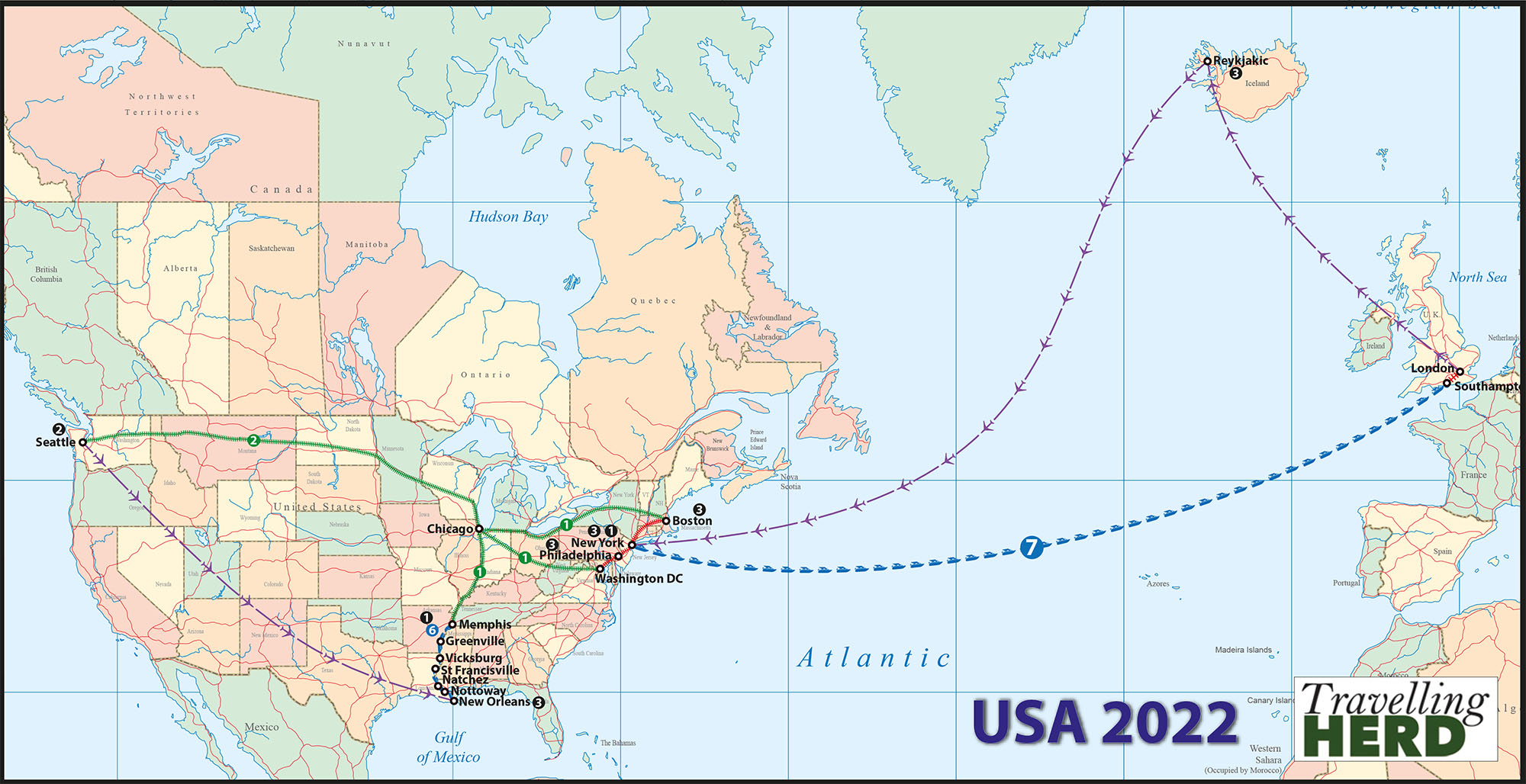Thursday 5th May 2022
Having arrived in Boston and deposited our bags, at the hotel, we took the Red Line subway from Andrew into the centre of Boston to walk around and get our bearings. Boston is proud of its revolutionary credentials and is full of landmarks and historical sites. The Freedom Trail is a walk around the city helpfully delineated by a red brick, or sometimes, painted red line.
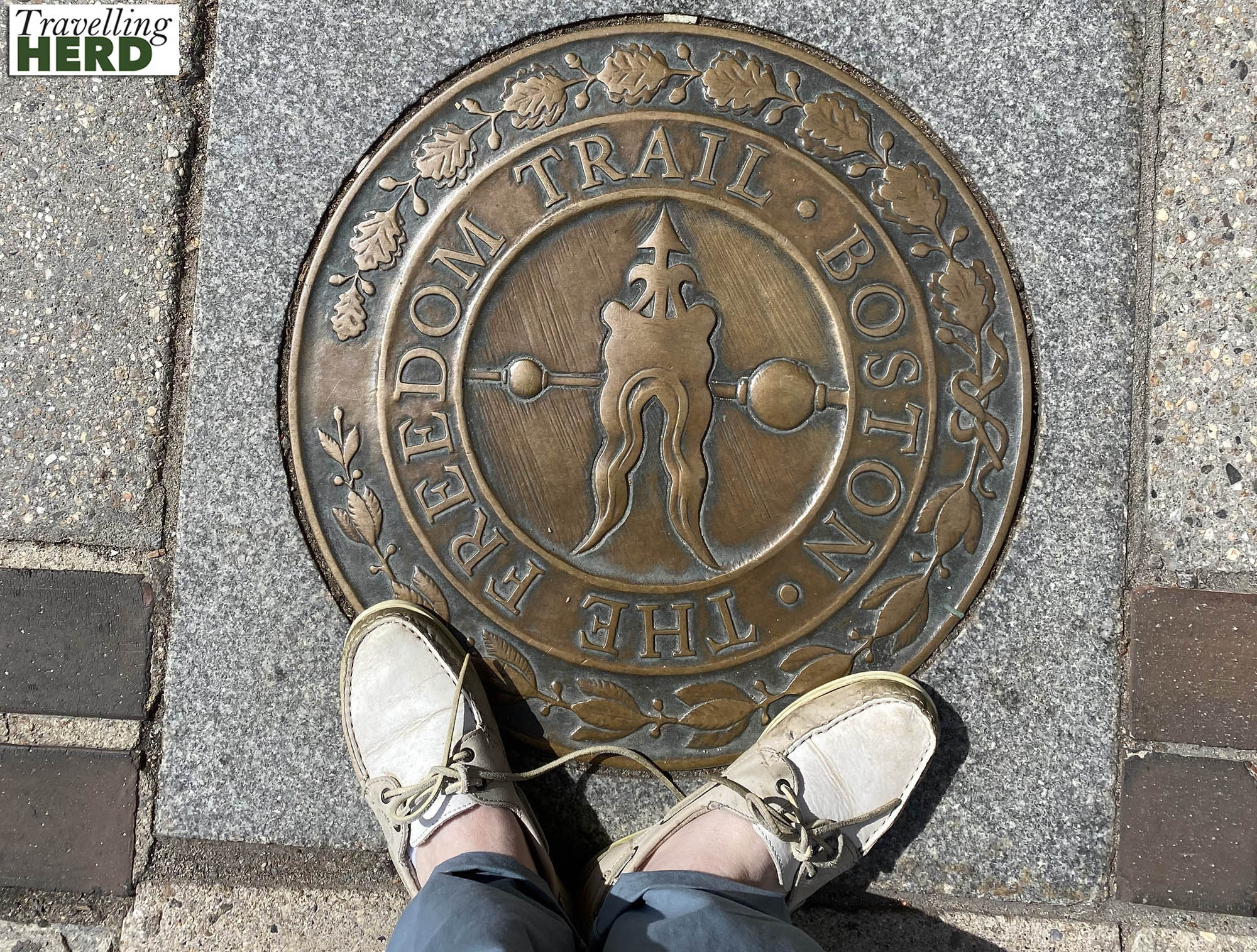
We started at Boston Common.
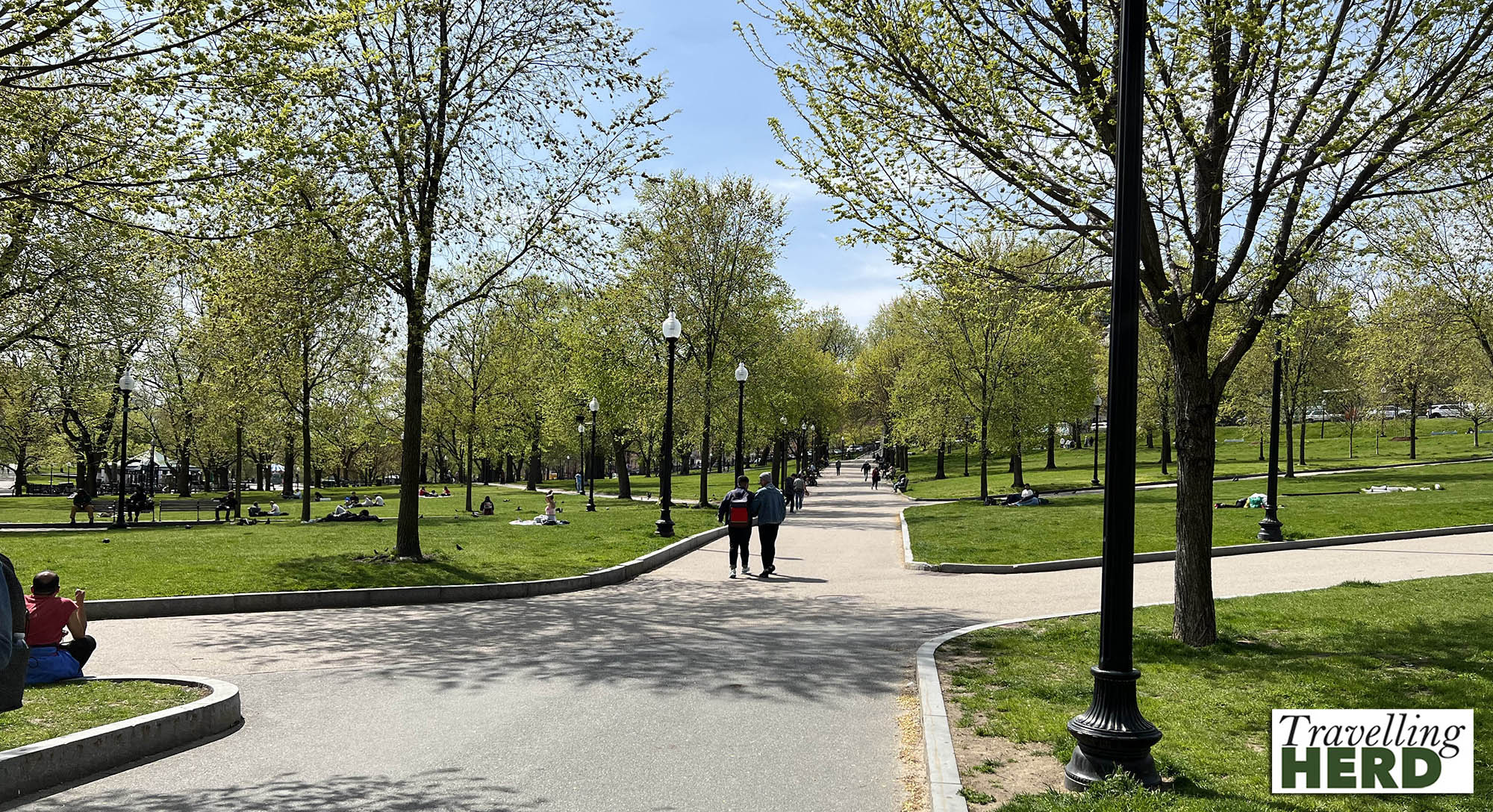
There was a protest taking place on one side of Boston Common outside the Massachusetts State House which dates from 1798 and is the oldest continually running state capital building in America. Tours are available and we planned to visit the interior the following day.
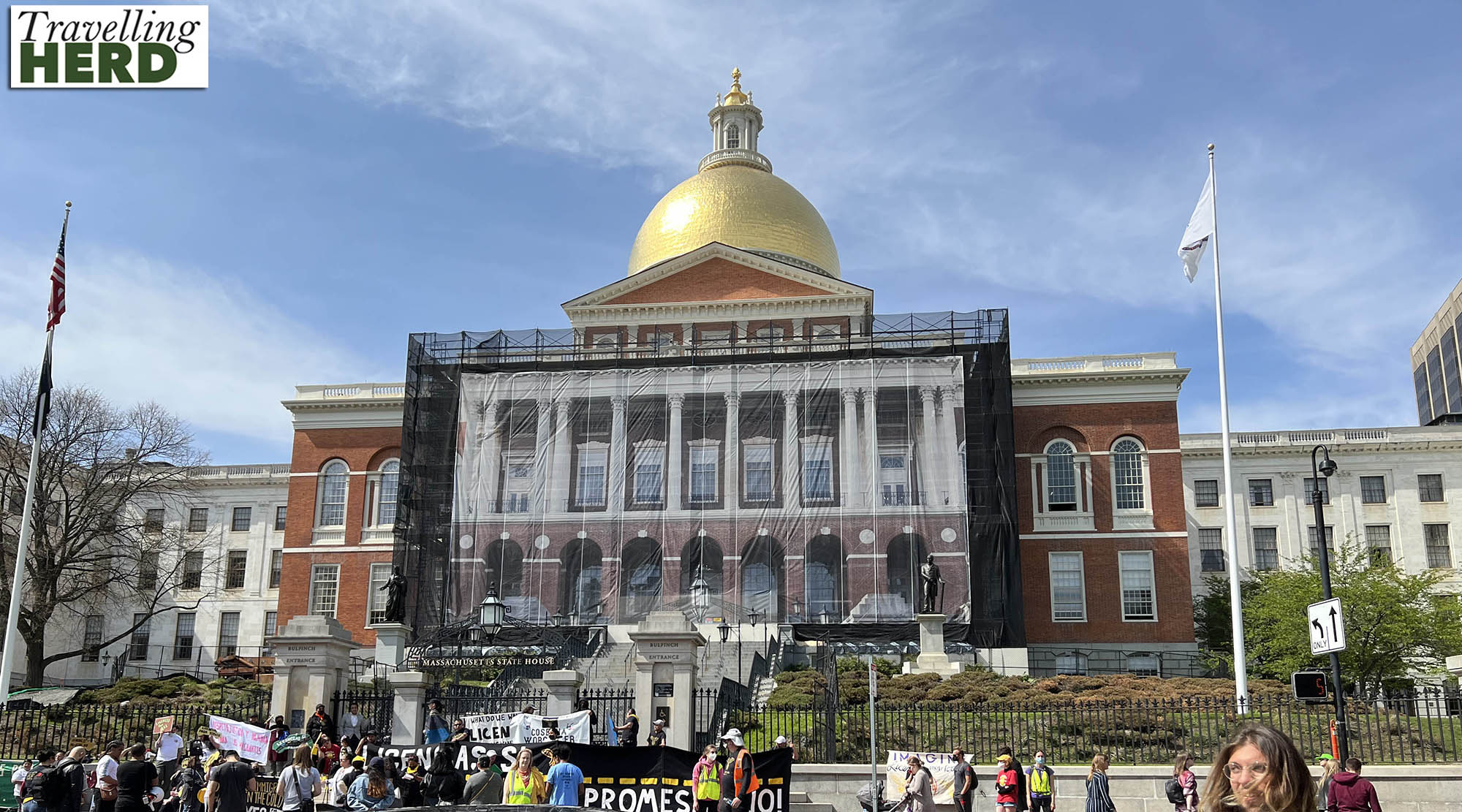
The Freedom Trail took us past Park Street Church and the Granary Burying Ground. This is the third oldest graveyard in Boston and the final resting place of several notable revolutionary patriots including Paul Revere and three of the people who signed the Declaration of Independence – Samuel Adams, John Hancock and Robert Treat Paine. There is also a memorial in the centre of the burying ground to the parents and relatives of Benjamin Franklin, who is himself buried in Philadelphia.
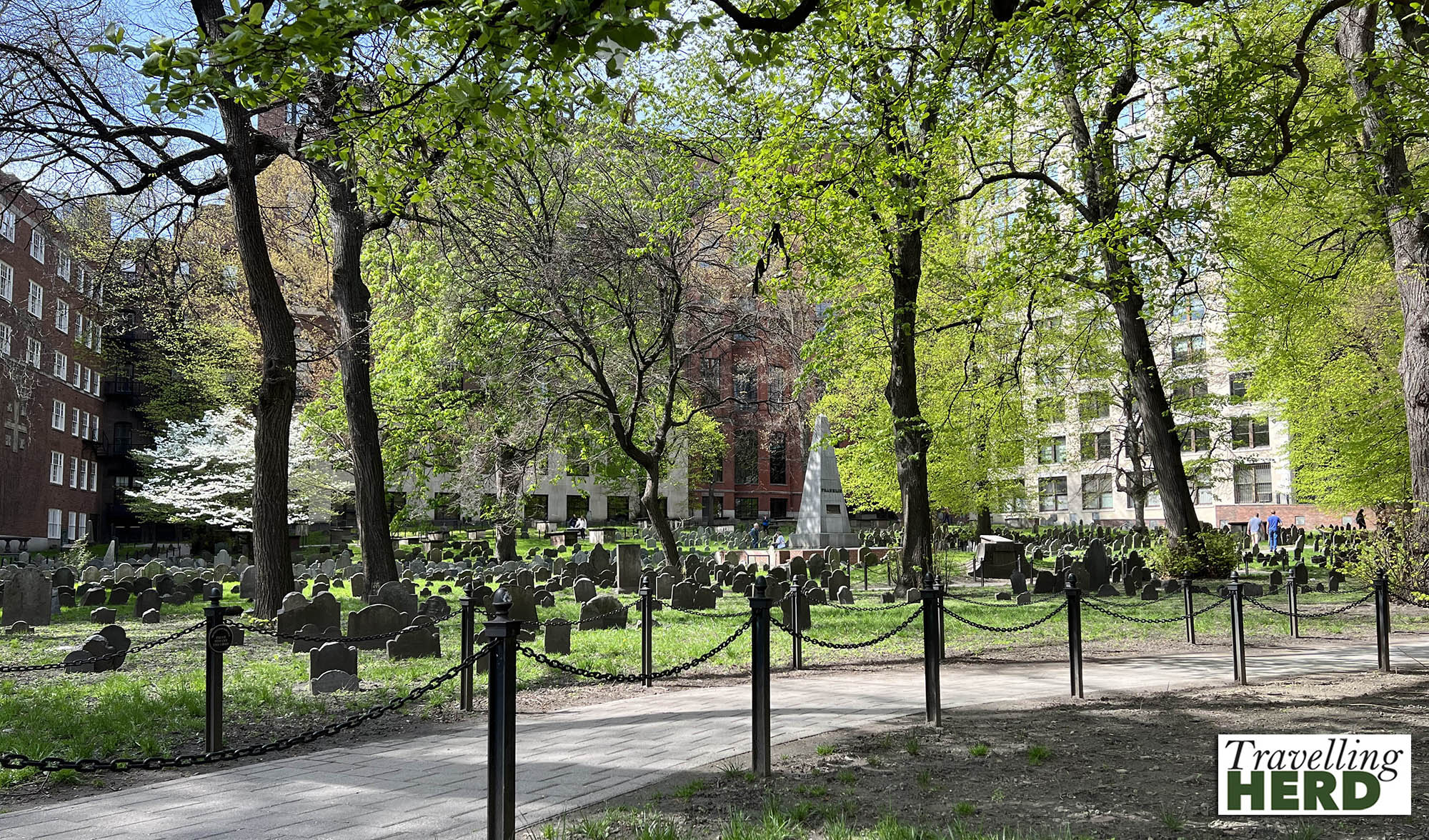
The King’s Chapel was founded as the first Anglican church in New England, in 1686. The official religion of Massachusetts at the time was Congregationalist.
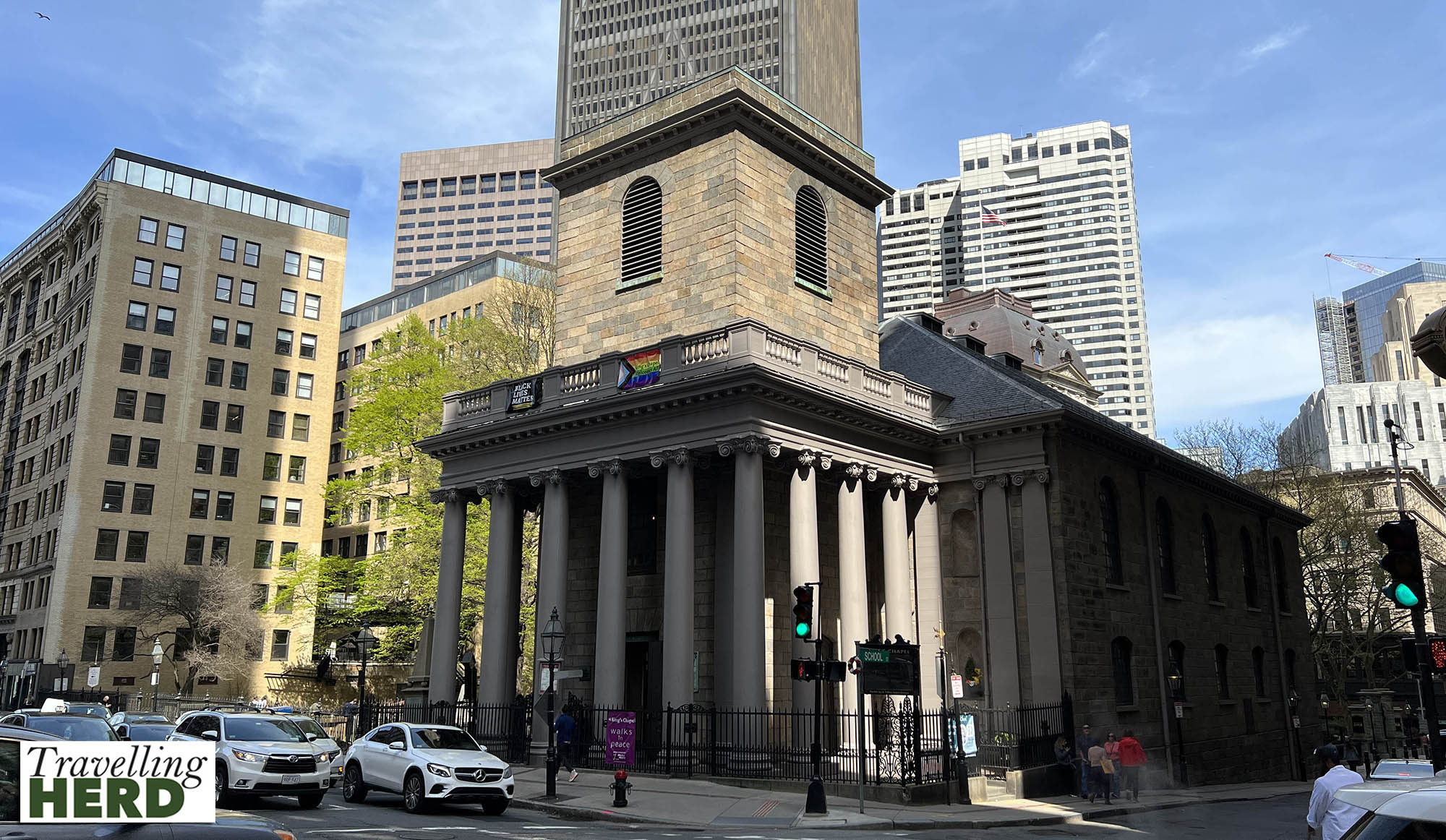
Adjacent but not affiliated, is the King’s Chapel Burying Ground, the oldest in Boston established in 1630. When we walked back past later we saw a wild rabbit grazing among the graves, keeping the grass in check in the heart of this busy, bustling city.

The Old City Hall was home to the city council for just over a century from 1865 to 1969.
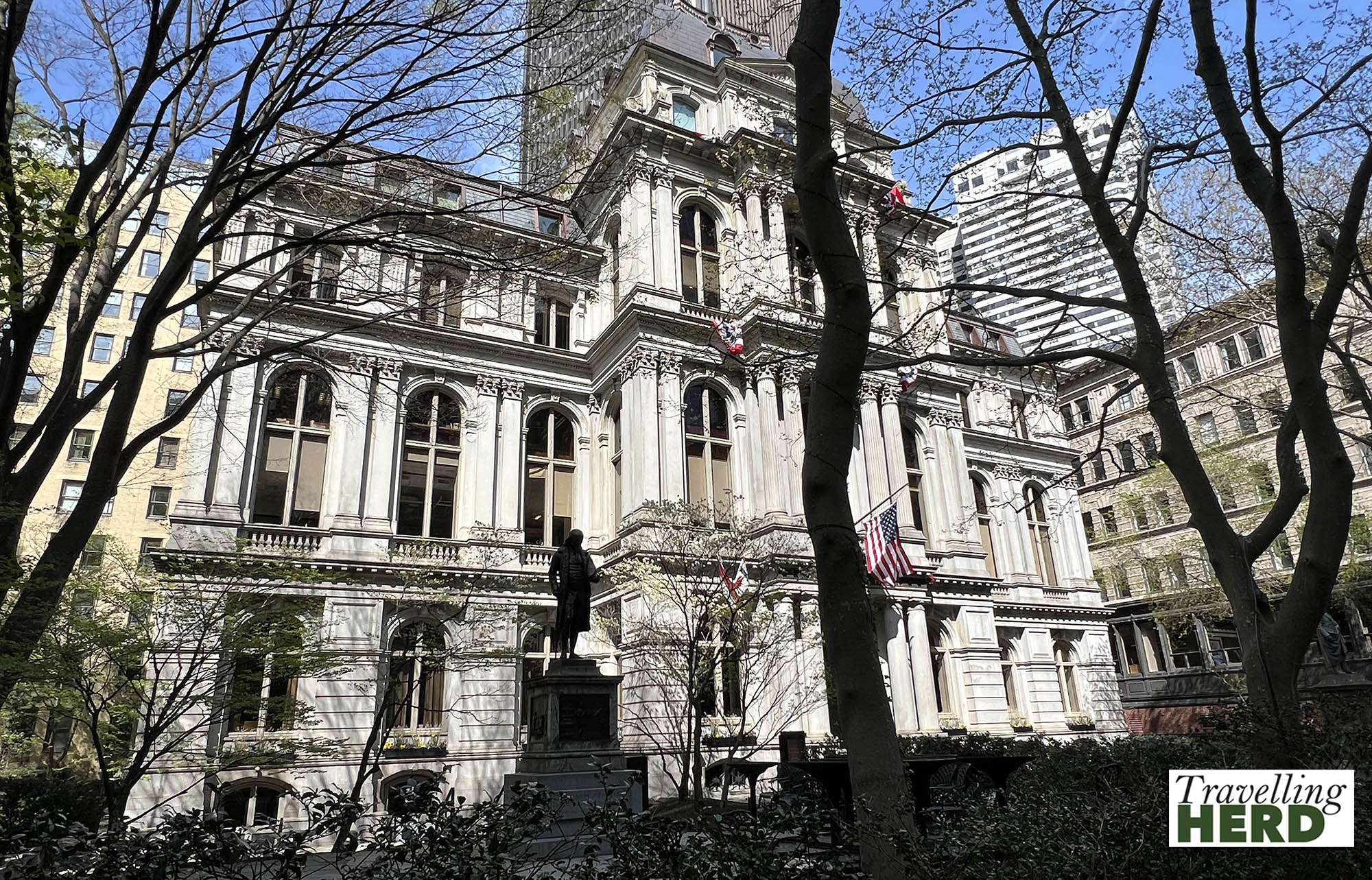
The Old South Meeting House is most famous for being the place where the Boston Tea Party was organised.

Bostonians gathered outside the Old State House on 18 July 1776 to hear the Declaration of Independence read for the first time.

Faneuil Hall was another meeting place used by the patriots.
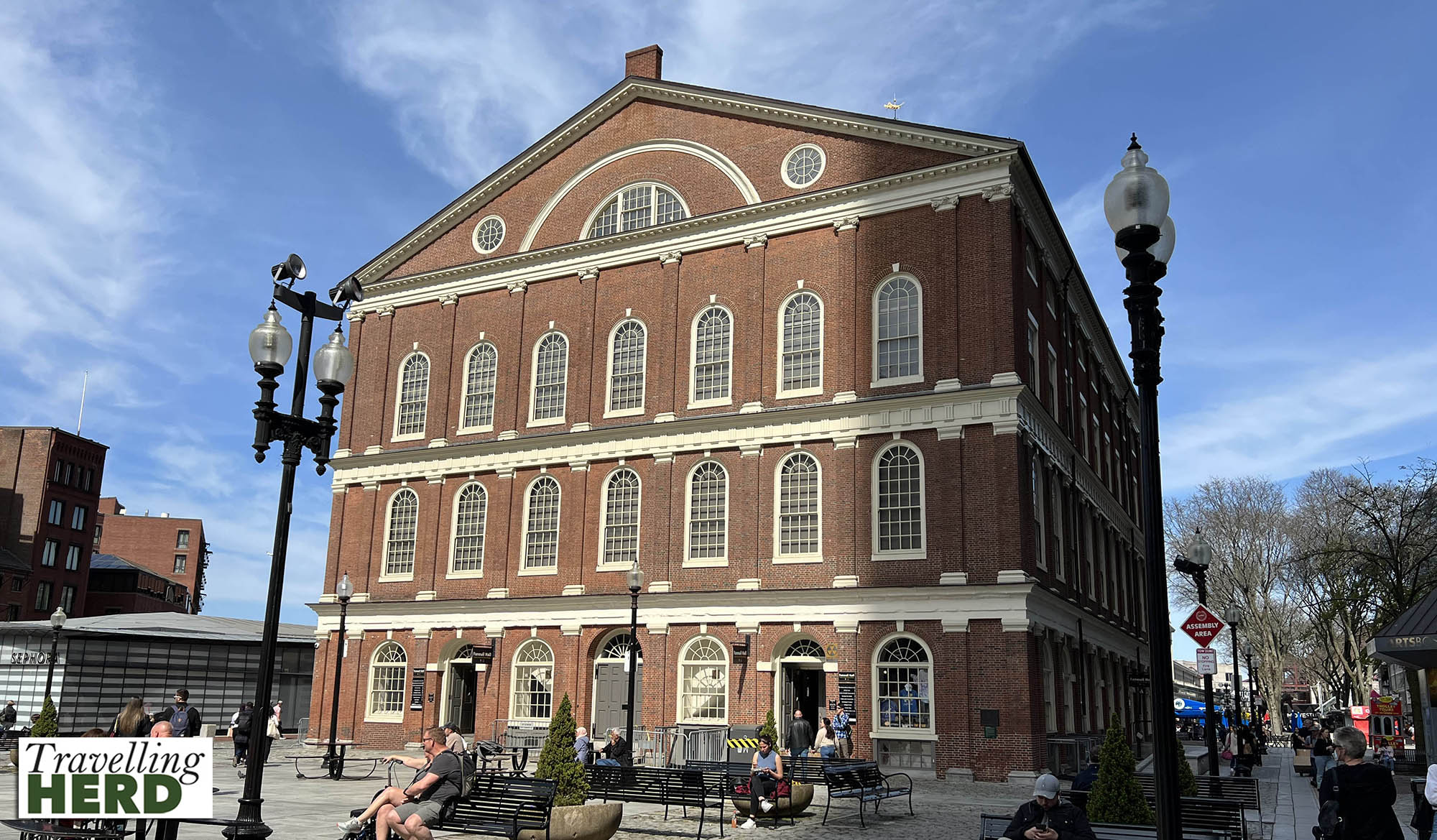
Quincy Market actually comprises three buildings, Quincy Market, South Market and North Market. Opened in 1826, the market buildings still serve the people of Boston.
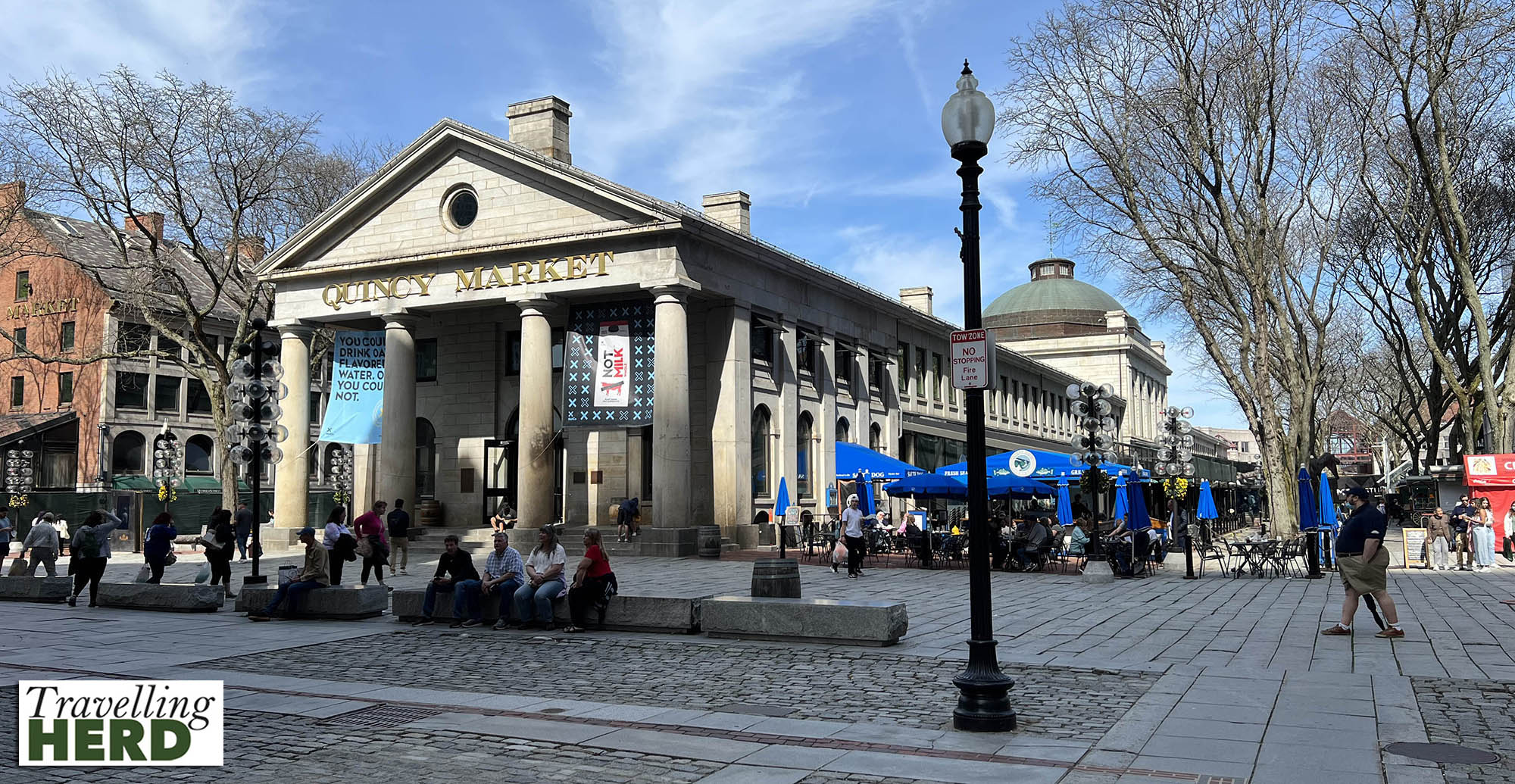
Paul Revere House was built around 1680 in what is now known as North End.
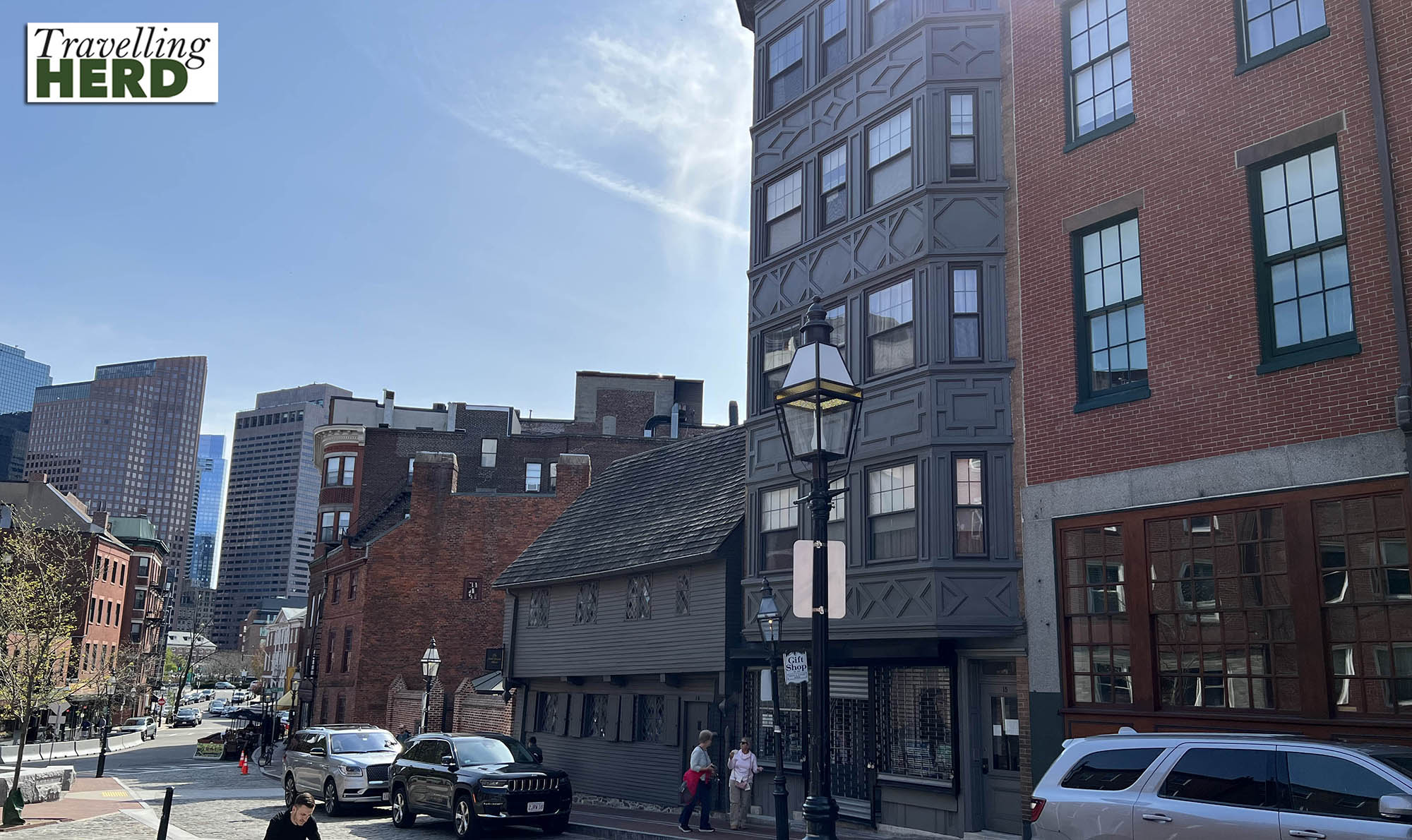
North End is Boston’s Little Italy and home to a multitude of restaurants, ice cream parlours and cafes. We planned to take the time to visit on the next day for culture and food.
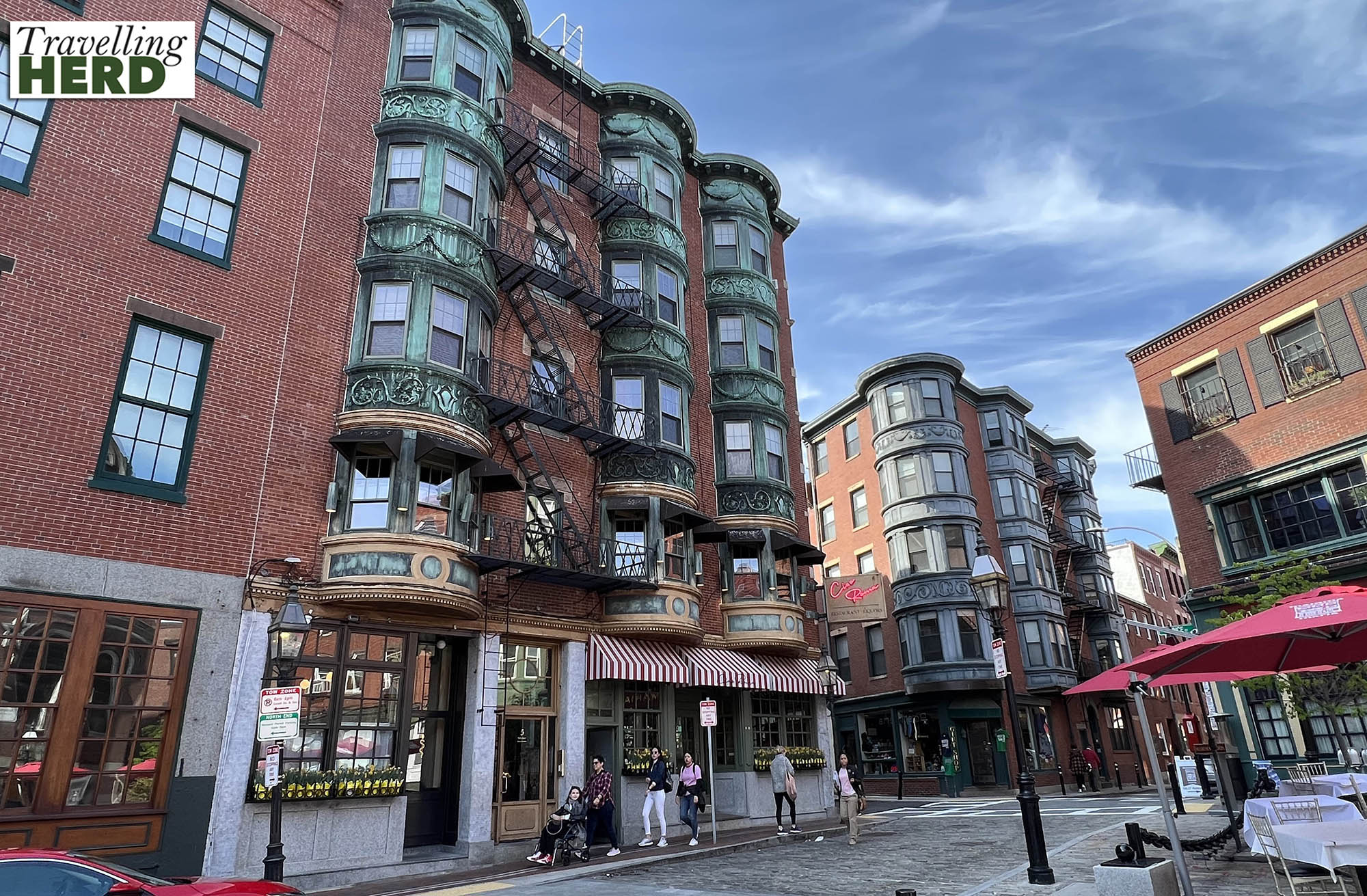
Established in 1723 Old North Church is officially called Christ Church and was inspired by the work of Christopher Wren.
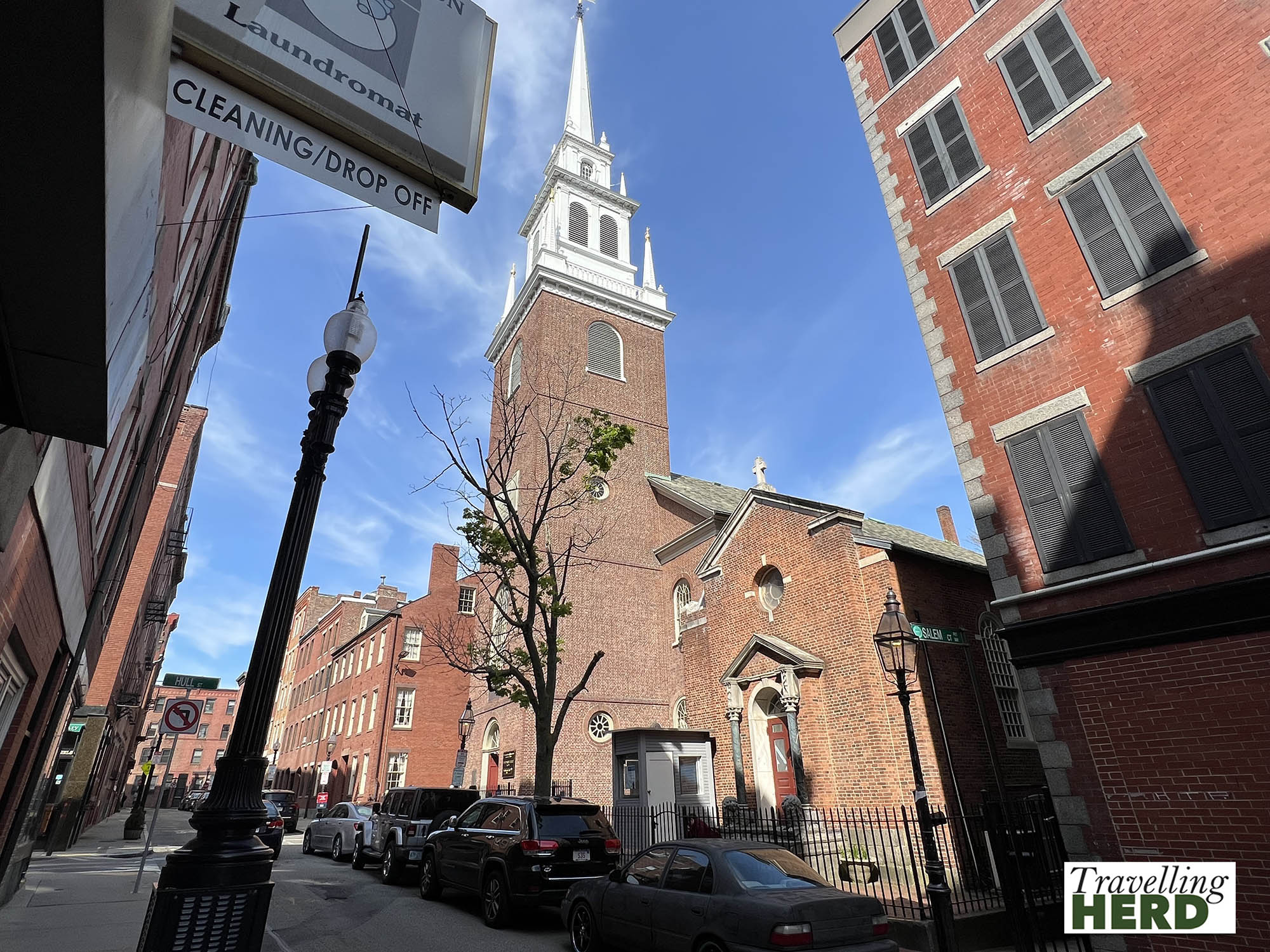
Having completed the majority of the Freedom Trail, and a whistle stop tour of the city, Robert rewarded himself with a cold beer in the Hard Rock Cafe and we planned the places we would devote more time to the next day.

It seemed we deserved another cold beer in the Samuel Adams Tap Room.

We also popped in to the Bell in Hand Tavern which first opened its doors in 1795 and claims to be the oldest continuously operating tavern in America [with a slight hiatus during Prohibition]. The name derives from the first owner, Jimmy Wilson, who was the town crier before becoming a landlord and endearingly named his new venture after his old profession. Unfortunately various remodellings over the years have ripped the heart and soul out of this building and we failed to find much of historical interest here so we did not take any photos.
Robert regularly watched Cheers in the 1980s and so we dropped in to the bar, originally called the Bull and Finch pub, which was used as the inspiration for and the outside of the bar in the series.
We were tired and hungry by this point but looking forward to seeing more of Boston.
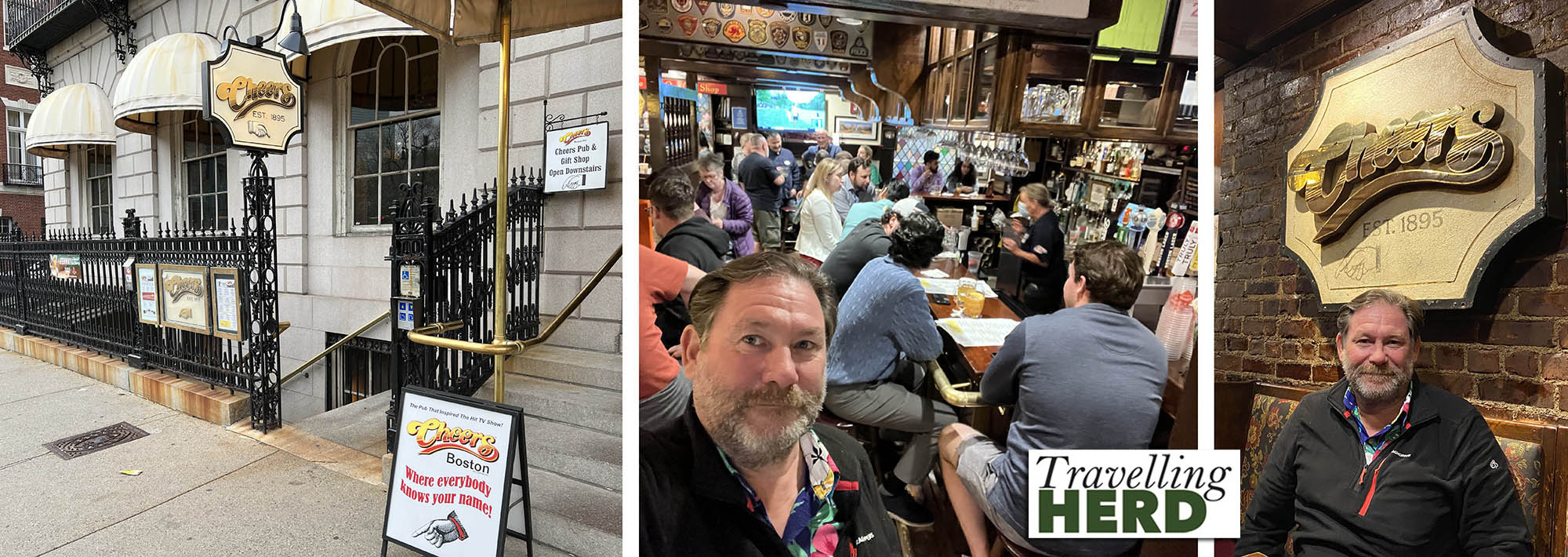
Route Map:
